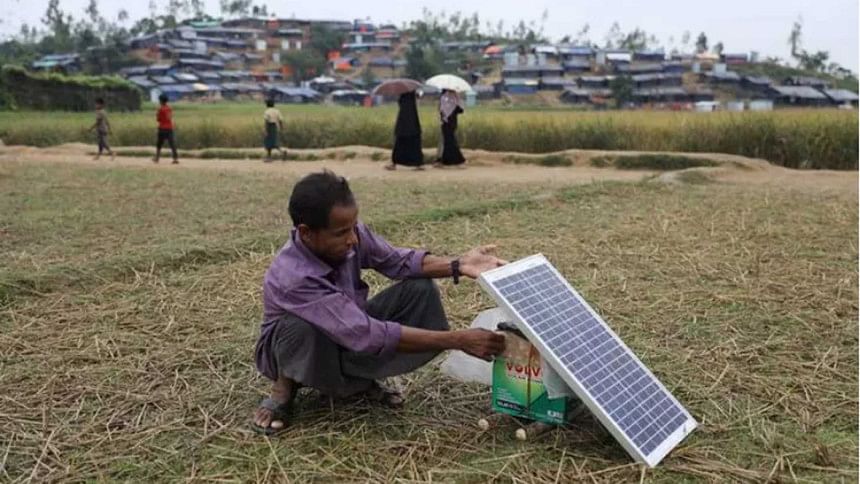Let nature inspire our development drive

If we want to address our development and societal challenges with the help of nature, we have three options. While nature-based solutions (NbS) have been discussed in this column extensively, let's talk about two other options: nature-driven solutions and nature-inspired solutions.
When we protect, restore, create or sustainably manage different ecosystems (such as wetlands, rivers, or forests), we practise NbS, which simultaneously gives us human and biodiversity benefits. If the premises and surrounding area of a power plant such as, say, Payra 1320MW Thermal Power Plant, are made green by planting various local tree species and by encouraging agroforestry, it will not only increase local biodiversity, but also keep the local temperature cooler, reduce energy consumption, and improve the physical and mental health of the people in the neighbourhood. In that vein, the proposed 137-sq-km Bangabandhu Sheikh Mujib Shilpa Nagar (BSMSN) on the border of Chattogram and Feni districts along the Sandwip Channel could be a game-changer for economic zone design, if it is developed by preserving and expanding the mangrove belt along the northern bank of the channel.
Similarly, if we keep a waterbody inside an export processing zone (EPZ) and allow different fish and aquatic species to take shelter there, and instead of binding its edges with concrete and bricks, we create slopes on its banks so that different aquatic plants can flourish, we would be practising NbS.
When we use natural forces to solve our problems, we employ nature-driven solutions. Solar home system (SHS) is one of the most widely used renewable energy options in Bangladesh. An estimated 20 million people were brought under the SHS during 2003-2018. Solar mini-grids are also piloted in several places of Bangladesh, while Teknaf hosts the largest solar power plant of the country, adding 20MW to the national grid. In the agriculture sector, the coverage of solar irrigation pumps is expanding rapidly. In early 2020, Bangladesh engaged an Australian company to install 1,140 solar-powered desalination units in 16 districts to ensure safe drinking water supply to 30,000 people.
In contrast to these, the Karnaphuli Hydropower Station may not be called a nature-driven solution, since it first stores water behind a dam and then releases it to produce electricity. Gravitational flow system to supply water through a pipe network, however, could be a nature-driven solution, as it uses gravity.
Nature has been inspiring us since time immemorial—be it in our art, literature, or architecture. When we take inspiration from nature to face our societal challenges, we are said to create nature-inspired solutions. A prime example of this would be the dome-shaped 30 St Mary Axe building in London, whose ventilation system was inspired by a 25cm-long vase-like sponge animal called Venus' flower basket, found in the depths of the Pacific Ocean.
Coastal areas of Bangladesh suffer from the lack of drinking water. They do have freshwater ponds, but over-extraction pollutes them heavily. A few years back, the international NGO Practical Action piloted an innovation called "artificial aquifer tube well." Beside a polluted pond, a 30-foot-deep well was excavated and filled with several layers of gravel and sand, mimicking the aquifers we see in nature. Pond water was channelled to reach the top of the artificial aquifer, which purified the polluted water overnight, and stored the clean water at the bottom of the aquifer—hence, a nature-inspired solution to water insecurity. The locals pumped out the clean water with a hand pump placed in the middle of the artificial aquifer, as is done with shallow tube wells all over Bangladesh.
Now, our large power, industrial and economic establishments can lead the way by incorporating the above three nature-related options in one place. Let's imagine an industrial park or an economic zone or a power plant standing by the Rupsha River. Its bank can be protected by a layer of swamp trees, its premises landscaped with green (local trees and agroforestry) and blue (water bodies, kept natural) patches, supporting biodiversity and the physical and mental health of its workers and inhabitants. It could use nature-driven options to get its energy, to desalinate waters, and to treat its waste.
As they embrace nature, the authorities of such large-scale establishments also need to keep in mind some guidelines and standards. For example, IUCN's Global Standard for Nature-Based Solutions can guide us on what can be called NbS and what cannot. But we need to simplify such guiding instruments, too, as their wording may not always be appealing or useful to the authorities in question.
Our big economic, industrial, and power-generation establishments offer significant employment opportunities in their respective localities. They could further support green jobs by embracing nature-based, nature-driven and nature-inspired solutions. This way, they can contribute to the just and equitable transition of our labour market as we gradually shift from a fossil fuel-dependent economy to a renewable energy-guided one.
Dr Haseeb Md Irfanullah is an independent consultant working on environment, climate change, and research systems. His Twitter handle is @hmirfanullah

 For all latest news, follow The Daily Star's Google News channel.
For all latest news, follow The Daily Star's Google News channel. 



Comments